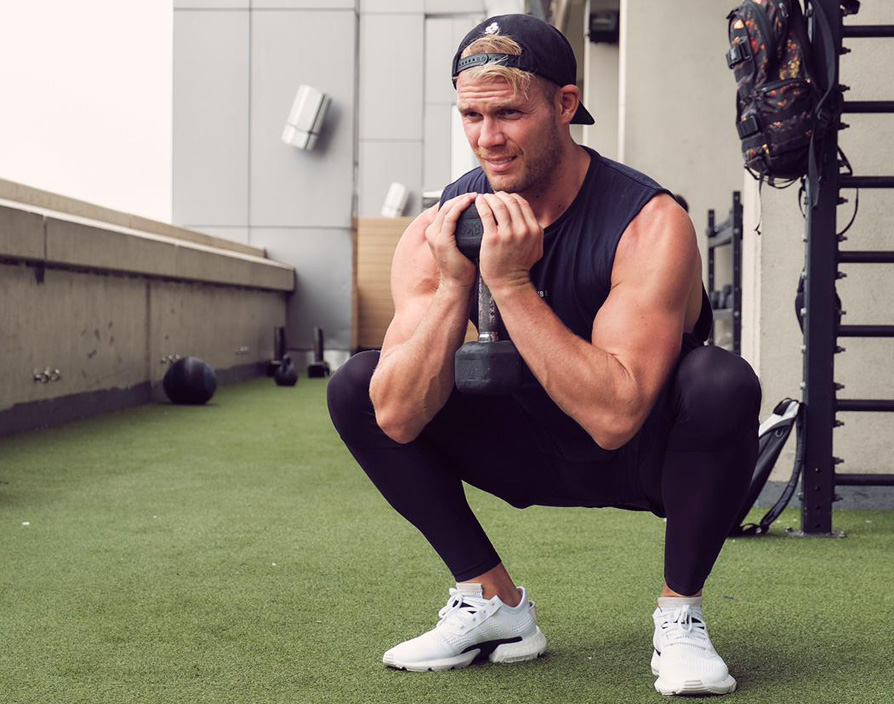Influencer. How many times have you seen that word in a social media bio? It’s one of the most popular buzzwords in marketing right now. The term refers to the numerous people making themselves a name on platforms like YouTube, Instagram and Facebook. In the past decade, YouTubers like Zoella, Alfie Deyes and Lilly Singh have become celebrities in their own right and are continually drawing in millions of followers and subscribers. Inevitably, brands have cottoned on to the massive potential this has for promoting their products and services. “It enables you to connect in an authentic and direct way with your audience when you’re a new business and you’re trying to grow,” says William Soulier, CEO of Talent Village, the influencer marketing agency.
However, influencer marketing has arguably been around the block for donkey’s years. Remember when Frank Sinatra brought a glass of Jack Daniels on stage? Fast forward a few decades and brands have employed celebrities and sportspeople like Britney Spears, David Beckham and Miley Cyrus to advertise for them. However, you don’t need to be a movie star or a Kardashian to become an influencer. All you require is a strong following, internet access and a smartphone that can produce high-quality photos or videos. “What once used to be a press trip is now being hijacked by influencers who are actually storytellers – and that storytelling is really what’s driving marketing today,” Soulier says. Along with creativity, all a potential influencer requires is the hallowed verified status or the blue tick to be able to represent bigger brands – a status more sought after than a university degree, according to affiliate marketing network Awin. And looking at seven-year-old Ryan of Ryan ToysReview with his almost 19 million subscribers earning him $22m through his YouTube channel, according to Forbes, it’s easy to see why nearly one-fifth of children in Britain aspire to be influencers.
As endorsements evolved beyond traditional media outlets like TV, print media and billboards, the impact of influencers skyrocketed thanks to the engagement social media posts have. “A generic billboard in the streets isn’t so engaging to the customer today but a lifestyle post that showcases the product in action, that looks and feels real is what today’s consumer is looking for,” Soulier continues. And rightly so, as the global Instagram influencer industry has doubled in two years and is already worth $2.4bn – a number only set to grow. “Because at the end of the day, there’s a constant thirst for new content,” he adds. As a result, influencers today are a part of mainstream marketing for every business.
One of the main benefits of using influencers is brands needn’t invest endless resources on creating material. “Only a few years back, businesses would spend crazy amounts of money curating and perfecting content they wanted to push out,” Soulier reflects. And it can become an expensive affair for startups should they create innovative photos on a regular basis. Now, they can rely on influencers. Money invested into them gives head honchos creative content as well as the ability to reach people across the world. “Influencer marketing is something that gets the real results you’re looking for if done in a continuous manner – it’s an always-on marketing channel,” Soulier says.
Indeed, leveraging influencers is increasingly popular – and for good reason. It can result in unparalleled sales, grow equity results and generate unmatched return on investment. And many have reaped these benefits. For instance, startup owners must take notes from 2012-launched activewear company Gymshark – a client of Soulier’s – which had revenue of £100m in 2018. This was the result of signing up 18 fitness enthusiasts including influencers like Nikki Blackketter and Lex Griffin who helped take the brand to more than 130 countries through their Instagram posts. And to reach an even wider global audience, Gymshark – with a following of over three million on Instagram – now invites fitness influencers big or small to become their ambassadors in exchange for free apparel and a commission fee. “When done right, influencer marketing has been shown to deliver real business goals like downloads, orders and sales,” says Solberg Audunsson, founder of Takumi, the influencer marketing platform. “Influencer marketing is very powerful when it comes to targeted brand awareness.” Given that 61% of UK consumers engage with influencers on a daily basis, with 80% making purchases based on their recommendations, it’s easy to see why partnering with influencers has become such a vital avenue for brands.
A seemingly endless line of companies have attempted to strengthen their reach by enlisting influencers and having a celebrity talk directly to their followers as a cost-effective way to gain traction. However, some are far from convinced. “No matter how much shit you throw at a wall, some of it will stick,” says James Smith, founder of James Smith Academy, the personal training business. “If you pay someone £5,000 to post something and you make £6,000 it’s a worthy investment because as a percentage you probably don’t need that many people to buy your products to earn money, so I don’t think it’s [influencer marketing which is] working – it’s just that you’ve got a big audience to tap into.”
While it may still appear like a “worthy investment” to use influencers, Smith believes the model has taken the wrong turn over the past few years because bosses are putting more resources into tackling traditional business issues but “no one’s really looking or giving a shit about people being mis-sold stuff.” And well-known celebrities like the Kardashians posting about slimming teas and appetite suppressant lollipops and businesses such as BOOMBOD fuelling body image issues continue to thrive on social media despite receiving much criticism. “The victims are impressionable young teenagers – male and female – who develop bigger issues from aspiring to buy this rubbish or to look like these influencers that they look up to,” Smith says. “It’s a saturated market where anyone with a few followers can do a story or post or whatever [for a product] and sell fucking dogshit in a can and they’d get paid for it.”
These days it’s almost impossible to scroll through your social media feed and not come across models with chiselled bodies and fitness gurus promoting supplements, workouts and so-called healthy recipes with their videos on Instagram Stories as well as on IGTV. And while it would be acceptable if the intention was to motivate their followers, some post content only for their own financial gain. And Smith says sooner than later, people will start calling out unethical endorsements. “In the UK you have people like Joe Wicks [who] sold out to Lucy Bee, sold out to Uncle Ben’s, sold out to Myprotein – and he was getting people to buy supplements they didn’t need, getting them to buy coconut oil that has no health benefits and people were lapping it up,” Smith claims. “He was raking in the money. So now that people won’t, he’s not going to be so popular and I’m not gonna make that mistake. Even if that means I don’t make as much money, for my longevity in the industry, I don’t care.”
Furthermore, when startups work with celebrities they do so in the hope that some of their supposed greatness will rub off on the brand. The risk is that bad press may also impact them if influencers make mistakes. Whether it’s reality TV star Scott Disick who accidentally posted a private message between him and Bootea, the company paying him for a post, to millions of his Instagram followers or Naomi Campbell committing a similar faux pas while posing with a new pair of Adidas kicks, it’s not always a win for entrepreneurs. “The most important thing that should be cracked down on isn’t whether or not you should do paid advertising – because if someone does see benefits in something it’s great, they should by all means share their experience,” Smith argues. “But it’s now that some people are just making up stuff, labelling it however they like and trying to flog it off to trustful people.”
Looking at these instances, it’s unsurprising that while using influencers might be a good idea for many, it’s important to do your research before hiring one. “What you need to look out for is the credibility of who you’re partnering with because essentially you’re bringing these influencers in as an extension of your brand, as an ambassador,” Soulier says. He adds that for a sports brand, for instance, partnering with a professional athlete with a social following is way more useful than a sports blogger. “Looking at Gymshark, you want to target someone relevant in the fitness space – not someone who goes to the gym a couple of times a week or isn’t a die hard sportsman. The influencers that we pair up with Gymshark are actually living and breathing the brand.”
Another factor to consider is if the influencer has the same values as the brand. In the case of Gymshark, if an influencer “suddenly starts posting about alcohol and vape cigarettes – both not necessarily the biggest controversies in the world – it goes against the brand and the values that Gymshark is promoting,” continues Soulier. “The way to utilise influence marketing is by building a real partnership, not just throwing dollars at various influencers.” Truly, startups must hire influencers who aren’t faking it. “And so the best way for an entrepreneur to actually avoid this type of mistake is simply looking at influencers that can embed that product in their daily lives,” he advises.
Smith seconds Soulier’s thoughts and believes it goes both ways, that influencers taking on campaigns just for money is a slippery slope. Despite being given offers worth £10,000 for posts, he’s always turned them down. “They don’t care if I don’t believe in [the product],” Smith says. “They assume that I’ve got a large engaged following and they just want to take advantage of that. I would endorse something that’s part of my everyday life. So as far as supplements or any type of product [are concerned], it’d be a no. If I believe in protein or creatine, I should just give people that advice. I shouldn’t have to stand behind it in a paid post. To me, damaging my reputation isn’t worth the money.”
While Smith believes in giving beneficial fitness tips to his growing 340,000 followers on Instagram, not all do. One of the main issues the influencer market faces is the lack of honesty. Since influencer marketing has so much at stake, there are always going to be those that fake their way into the fold. With the goal to reach as many people, influencers have been using bots or generating fake engagement using online tools and programmes. Realising these unethical practices, Instagram cracked down on fake accounts and third party websites. While this helped brands identify influencers’ fake numbers, Soulier believes it will still take time to eliminate the problem entirely. “The reality is it’s going to be a never-ending battle simply because these bots [and] websites where you can buy followers from ultimately close down [and] another one pops up,” he says. While this is seemingly a problem in the industry which will persist, there are ways to discover the credibility of one’s audience. “A lot of the times we’ll come across just an emoji in a comment and often that will be the work of bots,” Soulier adds. “That’s an easy way for startups to identify fraudulent accounts.”
Buying followers isn’t the only problem when dealing with influencers. Many fail to be open about sponsored content, which is a breach of the ruling by the Advertising Standards Authority (ASA). Hence, it’s important to get familiarised with the regulations to avoid bad practices, so the ASA has a comprehensive list of rules to be aware of before anyone dives into the industry of influencers.
One of the ASA rules requires influencers to be transparent and truthful when it’s a paid partnership with the declaration of #ad. And since the rulings came into play, the influencer-sphere saw a seismic shift over the past three years as non-disclosure of advertising became a hot topic in the media and government. “We’ve undertaken a lot more work in clamping down on misleading ads,” says Matt Wilson, senior media relations officer at ASA. When they receive a complaint, the first action taken by the governing body is always attempting to resolve informally where the posts must be taken down. “If an advertiser is unwilling or unable to work with us then we can and will apply further sanctions which can include, ultimately, referral to our legal backstop Trading Standards who can impose legal sanctions including fines and imprisonment,” he adds.
Consequently, the ASA is increasingly trying to raise awareness so companies don’t fall into legal hot waters. “One of our challenges is reaching out to influencers and raising awareness so they know the ASA and the ad rules exist and that they have to abide by them,” Wilson continues. “But there is more to do and we’re committed to having more impact regulating online which includes clamping down on those influencers who don’t play by the rules. We want to get to a place where the norm is for influencers and brands to play by the rules.”
For all the work the ASA is doing, entrepreneurs can’t afford to be blind to what’s happening. There are many influencers who might boast of millions of followers but are bad examples of using social media. Felix Kjellberg, known as PewDiePie, had YouTube videos with racist slurs and anti-semitic content, while fellow YouTuber Austin Jones pled guilty to child porn charges. And there were those like ThatsBekir and Bahar Al Amood whose feud sparked violence among their followers, which compelled hundreds of police officers armed with riot control sprays to be deployed.
Mastering an understanding of what makes its audience tick will enable a startup to better reach its customer base and grow with new prospects through valuable content, opinion leadership and vlogs – all of which will build long-term brand awareness and loyalty. “Influencers are great at talking to their audiences but authentic and honest content is important for influencer marketing,” Audunsson concludes. “The key for brands is to partner with influencers that are relevant and appropriate to [its] offering.”
Share via:


















































